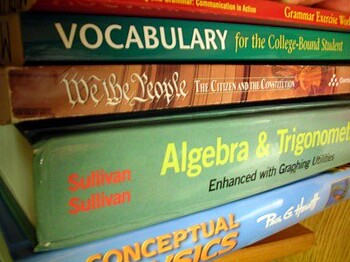As you delve into the maker's mindset and its role in 21st-century learning, the key things to consider are, as in the classroom, the learning objectives. Yes, it is cool to print a helical gear or chain links, but 3D printing in the school environment is just another tool to achieve an end, and in many cases, another beginning. Our real purpose is creating those memorable experiences that students draw on and inspire them towards more, well beyond the walls of our classroom.
Sylvia Libow Martinez (http://sylviamartinez.com/ @
In another vein, we have increased the haptic dissonance of learning, interaction, and socialization to such an extent that many people's virtual lives have replaced their physical lives. As we digitized our world, we lost one of the primary ways that our brain makes memory--one where sight, sound, taste, touch, smell as well as physical location and the color of person's coat commingle in such a way that synapses connect and a memory is formed.
An MIT study last year (http://www.cell.com/neuron/
If the decrease in haptic dissonance results in greater recall, then what might we do in the classroom to ground learning and make it more than just a short-term event? Does the proliferation of one-to-one devices and increased digital dependence actually work against our goals of fostering capable students who can react to new experiences in a calculated and deliberate fashion?
An MIT study last year (http://www.cell.com/neuron/
If the decrease in haptic dissonance results in greater recall, then what might we do in the classroom to ground learning and make it more than just a short-term event? Does the proliferation of one-to-one devices and increased digital dependence actually work against our goals of fostering capable students who can react to new experiences in a calculated and deliberate fashion?
The promise of realia, tactility, and 3D printing is to put back into the hands of our students, the forms that have been taken away and rendered simply as text or image The hope is that synapses form and real learning happens once again as the "Do Not Touch" sign is removed from the exhibit, and students can truly investigate a trilobite, printed out ABS plastic, and inquire about its function and form.
It is not just literature-based arts and crafts--consider the time that, in my case, a U.S. history teacher pulled a flintlock pistol (obviously different days than today) from his drawer, and demonstrated the amount of time it took to load and fire a single shot as we, the Redcoats, advanced on his position atop his desk, also known as Bunker Hill--sight, sound, touch, the lingering odor of burned black powder...and a real understanding of what it took for those men to stand against the most powerful army the world.
That is real learning.
It is not just literature-based arts and crafts--consider the time that, in my case, a U.S. history teacher pulled a flintlock pistol (obviously different days than today) from his drawer, and demonstrated the amount of time it took to load and fire a single shot as we, the Redcoats, advanced on his position atop his desk, also known as Bunker Hill--sight, sound, touch, the lingering odor of burned black powder...and a real understanding of what it took for those men to stand against the most powerful army the world.
That is real learning.




